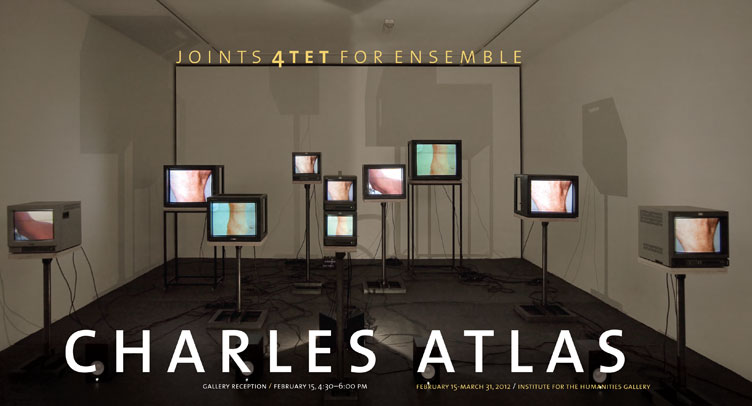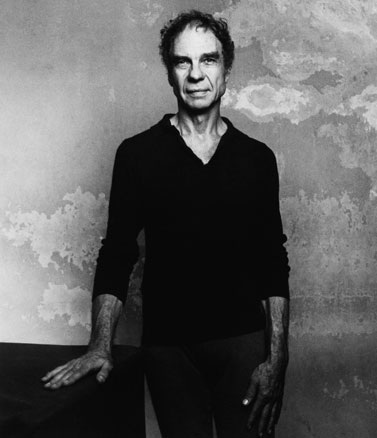
In the Institute for the Humanities Gallery on S. Thayer Street a video installation exhibit by Charles Atlas is on display through Saturday March 31st. Joints 4tet for Ensemble is a touching homage to the life and movement of famous modern dancer/choreographer, Merce Cunningham, who recently passed away in 2009, at the ripe-old-age of 90. [want to learn more about Merce?: http://www.merce.org/about/index.php]

The exhibit consists of exactly what you see in the photo above, nothing more, nothing less. The room is dimly lit, with small, hidden spotlights illuminating the arrangement of various sized box-shaped televisions on sturdy metal stands, casting larger-than-life shadows on the walls behind them. The arrangement of televisions and speakers, along with the giant shadows cast on the walls, create the image of a choreographed arrangement of bodies in space, the televisions the empty beings transmitting the remnants of the movement of Merce Cunningham. Images of Merce’s hands, arms, knees, and feet are portrayed on the various screens, video footage taken by Charles Atlas during the time that he worked as an assistant stage manager for Merce’s dance company. In between rehearsals Charles would videotape Merce exploring movement and gesture in his own body, focusing in on one small movement of the body–the twirling of his wrist, the bending and straightening of his knee, the extension of his arm. Each movement done purposefully and thoughtfully, beautifully. A soundtrack of street noise projected from the speakers–traffic, church bells, people talking as they pass by.
 As I sat on the bench facing the screens, alone in the gallery, I felt as if I were in a sacred space paying my respect to one of the most influential dancers and choreographers who ever lived. I imagined that I was in a park, with Merce Cunningham himself, and I was Charles Atlas, holding the camera as Merce moved. Traffic and people buzz by, missing the simple beauty in the artistic genius standing before them. And I stand mesmerized by his movement.
As I sat on the bench facing the screens, alone in the gallery, I felt as if I were in a sacred space paying my respect to one of the most influential dancers and choreographers who ever lived. I imagined that I was in a park, with Merce Cunningham himself, and I was Charles Atlas, holding the camera as Merce moved. Traffic and people buzz by, missing the simple beauty in the artistic genius standing before them. And I stand mesmerized by his movement.
I loved that Charles chose these everyday movements that are so relate-able, the idea of the everyday further enforced by the street noise projecting from the speakers. It made me feel like I was having an intimate moment with Merce, that I knew him personally–I saw the beauty in his movement, as a dancer, but also as a person. It made me miss him, as if I knew him like Charles did. The street noise as well as the red lines moving upwards that would sometimes appear on the screen in place of the videos of Merce reminded me that he is gone, and the world continues turning.
This exhibit hit straight to my core, in a very unconscious way, and I realized that this is because this is how a dancer sees the world. We appreciate the natural choreographic arrangement of objects in space, the slightest movement is awe inspiring art, and the noise of everyday life is music.

